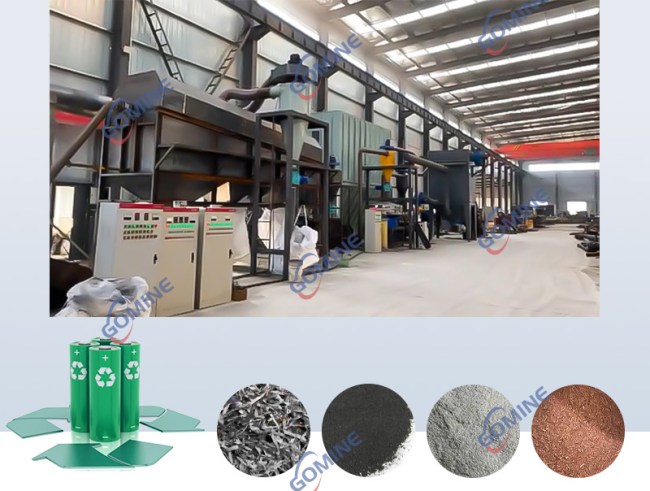How To Recycle Copper And Aluminum From Waste Lithium Batteries?
Waste lithium batteries, as ”by-products” of the new energy industry, contain a large number of valuable metal elements, such as lithium, cobalt, nickle, etc, but they also contain heavy metals and electrolyte components that are harmful to the environment and human. If not handled properly, it will not only cause a waste of resources, but may also cause serious environmental pollution.
Faced with the problem of recycling waste lithium batteries, Gomine designs the lithium battery recycling production line that uses a series of physical processing technologies to dismantle, crush, screen, and sort waste lithium batteries to effectively separate valuable metals and other impurities in the batteries, providing the possibility of the subsequent reuse.
The process of lithium battery recycling

Discharge:
Waste lithium batteries are soaked in slat water to ensure that they will not be charged after subsequent crushing and prevent them from burning and exploding.
Shredding and crushing:
Send the discharged lithium battery to the shredder to shred it into small pieces, and then roughly crush it with the crusher into about 1 cm. Separate the casing, positive and negative electrodes, and enter the screening process.
Screening:
Drum screening screens out black powder, the screening rate can reach 80%.
If you do not need to collect the diaphragm, you can choose to configure a carbonization furnace to carbonize and remove the diaphragm.
Sorting:
The crushed lithium battery material enters the magnetic separator, and the iron is screened out by magnetic force; the remaining materials are crushed and ground into screening equipment, such as rotary vibrating screen, specific gravity separator, eddy current separator, which uses the size difference and weight difference between particles to effectively separate copper, aluminum and black powder.
The implementation of lithium battery recycling production line not only effectively solves the recycling problem of waste lithium batteries, but also realizes the recycling of resources and reduces environmental pollution. At the same time, with the continuous expansion of the new energy vehicle market and the continuous advancement of battery recycling technology, the economic benefits of this field are becoming increasingly prominent. In the future, with the continuous innovation of technology and the continuous support of policies, the recycling and reuse industry of waste lithium-ion batteries will usher in a broader development space.


